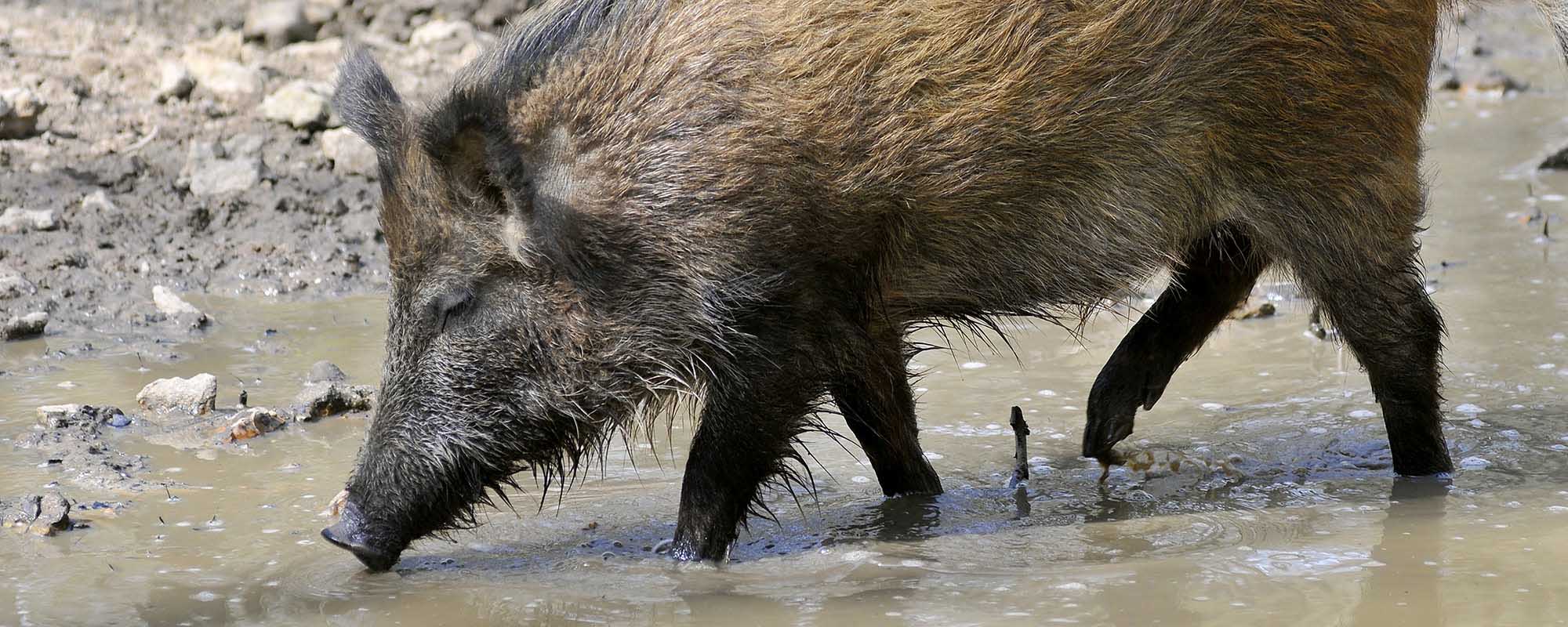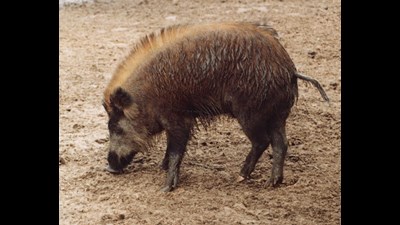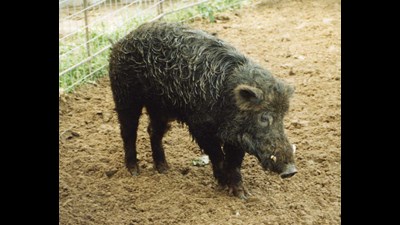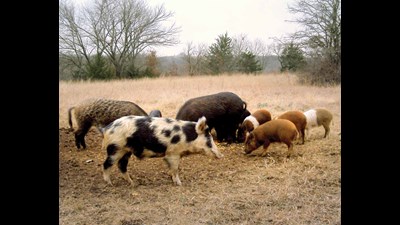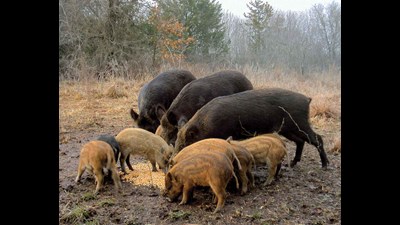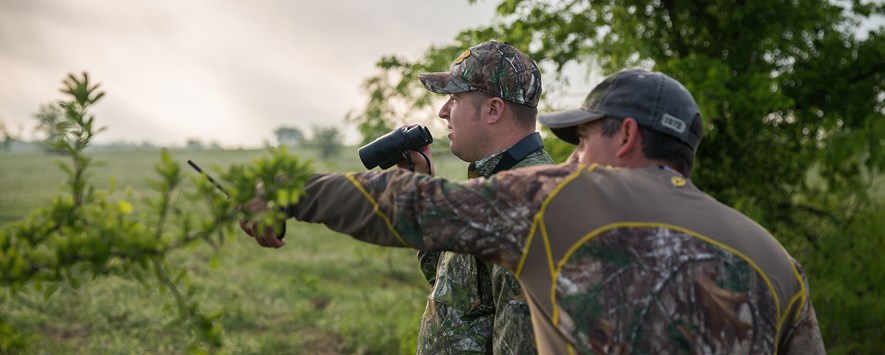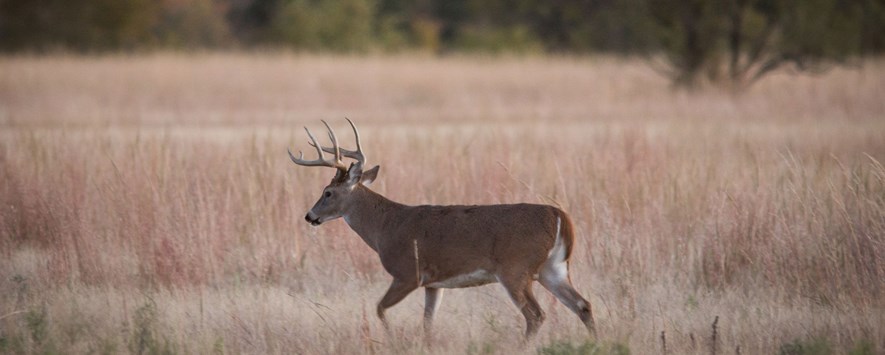Determining distinguishing characteristics between all possible crosses of domestic, feral and Russian hogs can be difficult. Studies have been conducted using DNA, skull measurements, external body measurements, coat coloration patterns, bristles and other criteria, but definite determinants have not yet been developed for all possible crosses. Therefore, it should be noted that the following descriptions are general and relative.
 Tusks such as these, which are found on the lower jaw, or mandible, can be extremely dangerous when put to use by a mature boar. The upper tusks, or witters, help keep the lower tusks razor sharp.
Tusks such as these, which are found on the lower jaw, or mandible, can be extremely dangerous when put to use by a mature boar. The upper tusks, or witters, help keep the lower tusks razor sharp.
Description
In general, a feral hog looks like its domestic counterpart. Coat coloration patterns can vary from solid black, brown, blond, white or red to spotted (various combinations of black, white, red and brown) or belted. A belted hog has a white band across the shoulder and forelimbs. Feral hog bristle length is generally longer than a domestic hog, but shorter than the hybrid or pure Russian. Feral hogs can reach 3 feet in height and weigh over 300 pounds, however, sows and boars in the 100-150 pound range are more common. A boar has four continually growing tusks that can be extremely sharp and may reach 5 inches before they are broken or worn off from use. Tusks are used for defense and to establish dominance during breeding. Male feral hogs also develop a thick, tough skin composed of cartilage and scar tissue on the shoulder area, which is sometimes referred to as a shield. The shield develops continually with age and through fighting.
The pure Russian boar is generally light brown or black with a cream or tan color on the tips of the bristles. Its underside is lighter in color, and its legs, ears and tail are darker than the rest of the coat. Its bristles are the longest of the three types of wild hogs. Pure Russian boars have longer legs and snouts, and their head to body ratio is much greater than that of feral hogs. They also tend to have shorter, straighter tails. All types of wild hogs can raise the hair on the back of their necks and shoulders producing the "razorback" look.
Feral/Russian crosses exhibit combinations of features from both the feral and the Russian hogs. Bristle length in the hybrid is longer than the feral, but shorter than the Russian. Hybrids exhibit the smallest bristle shaft diameters. Striped patterns on the young are sometimes thought to be an indicator of pure Russian or feral/Russian crosses; however, this pattern has also been found in all three types of feral piglets and therefore is not a reliable method of identification.
Home Range, Reproduction and Activity Periods
Feral hog home ranges can vary from 0.4 to 19 square miles, and they have been known to travel up to 15 miles. Availability of water and food, and sexual activity are probably the three most important factors determining home ranges; thus, fall and winter ranges are likely to be larger than spring and summer ranges. Males generally have larger home ranges than females, especially during breeding season. Boars usually travel and feed by themselves unless they are with a receptive sow. Groups of wild hogs called "sounders" generally consist of sows and their young.
Feral hogs are prolific reproducers, having as many as two litters per year, with each litter consisting of four to 10 young. Good habitat, nutrition and weather allow production of the most young with peak numbers usually born in late winter or early spring. The gestation period is about 115 days, and litters consist of a 1:1 male to female sex ratio.
Feral hogs can be active any time of the day depending on season and food availability. Hot summer temperatures make them nocturnal (active at night) to avoid excessive heat. During cooler months, when unmolested, feral hogs are active primarily in early morning and late evening. Scarcity of food and poor habitat may cause them to extend their active hours regardless of the season. Hunting pressure or other harassment may also cause them to shift activity periods and home ranges for a short period of time.
